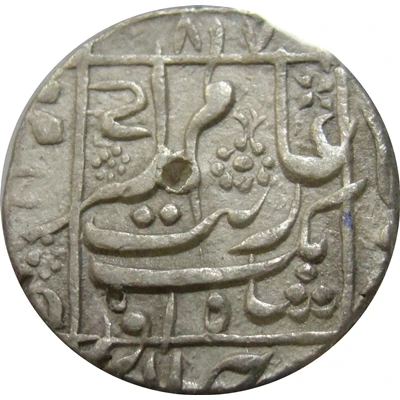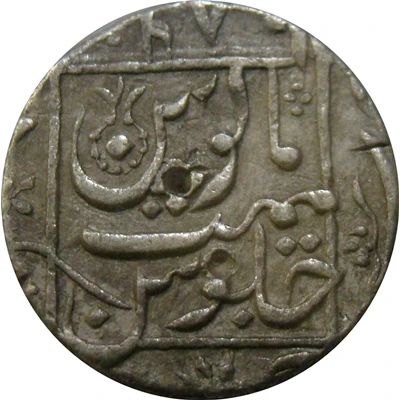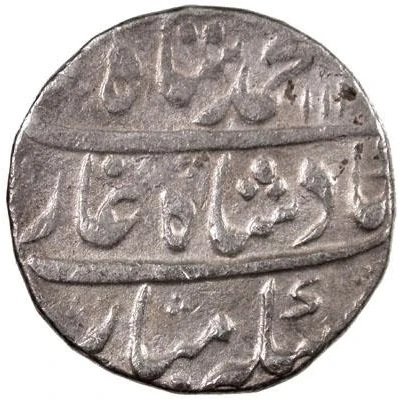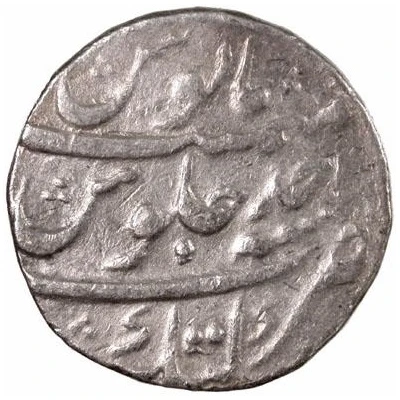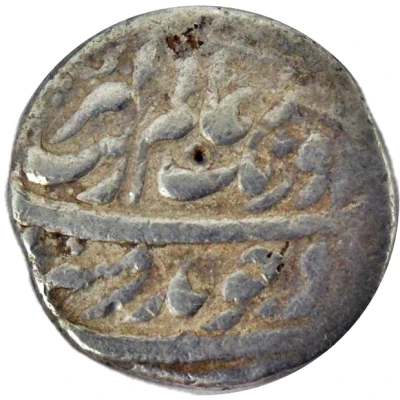
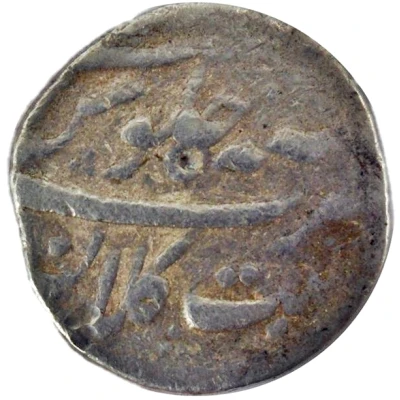

© Victor Newey
1 Rupee - Aurangzeb Tibet-i-Kalan / Ladakh ND
1076 year| Silver | 11.47 g | - |
| Issuer | Mughal Empire (India) |
|---|---|
| Emperor | Aurangzeb (Alamgir Aurangzeb) (1658-1707) |
| Type | Standard circulation coin |
| Year | 1076 |
| Value | 1 Rupee |
| Currency | Rupee (1540-1842) |
| Composition | Silver |
| Weight | 11.47 g |
| Shape | Round (irregular) |
| Technique | Hammered |
| Demonetized | Yes |
| Updated | 2024-10-05 |
| Numista | N#76936 |
|---|---|
| Rarity index | 100% |
Reverse
Legend in Persian: Sanah 8 Julus Maimanat Manus, Zarb Tibat Kalan
Translation: Struck at Tibet-Kalan, (little Tibet), during the 8th year of his prosperous reign
Edge
Plain
Comment
- Dies prepared by the Mughals and struck in Tibet Kalan- India, Mughal, Aurangzeb, Silver Rupee, Tibet-i-Kalan (Ladakh), date off flan (AH 1076, Year 8), 11.47g (ONS 208 (Summer 2011) pp.33-34). Fine and of the highest rarity, possibly the only recorded specimen.This Rupee is of the highest numismatic importance and illustrates the value Aurangzeb placed on asserting Mughal authority over Kashmir and the Himalayas. In 1639 Ladakh narrowly escaped total subjugation by Shah Jahan in part by promising an annual tribute. In later years, when Ladakh not only reneged on its promise but also disrupted the Mughal trade route between Kashmir and central Tibet, Aurangzeb threatened invasion again and, reluctantly, the territory submitted to the growing empire. The present Rupee bears the name of the Mughal emperor and the mint but its exact nature is perhaps more complex. Rhodes speculated that the issue may well have been struck independently in Ladakh as tribute, and may then have circulated exclusively in India as propaganda. The issue of this coinage is recorded in the contemporary sources the Alamgirnama, the Maasir-i-Alamgiri and by Khafi Khan II.
Interesting fact
One interesting fact about this coin is that it was issued during the reign of Aurangzeb, who was the last powerful emperor of the Mughal Empire. He ruled from 1658 to 1707 and his reign saw the expansion of the empire's territories, as well as significant cultural and architectural achievements. The coin's design and inscriptions reflect the cultural and religious influences of the time, and its silver content makes it a valuable collector's item for numismatists.
